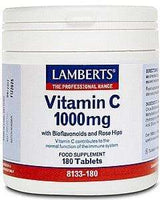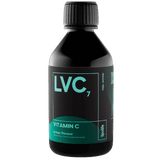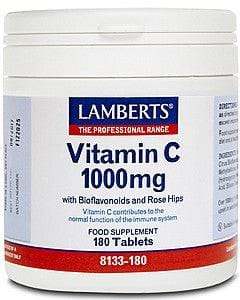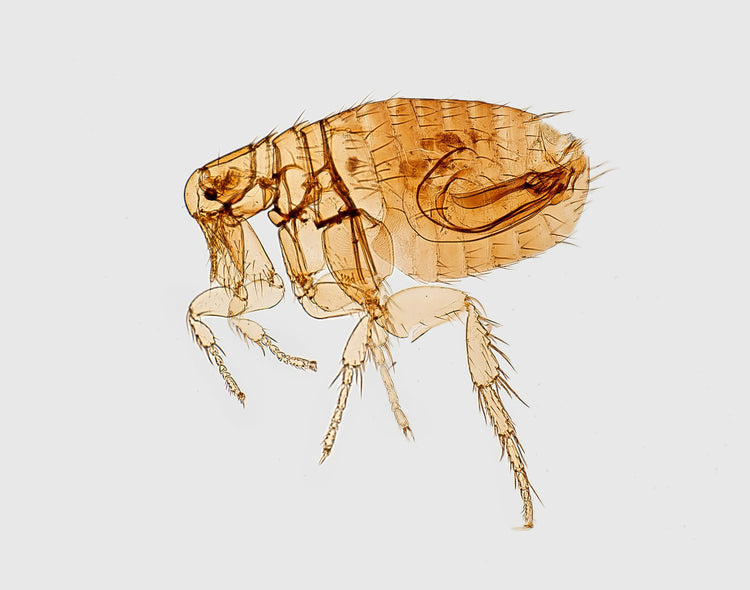Asymmetrical Face: Causes and Treatments

Related products
Facial asymmetry, described in medical terminology, refers to the phenomenon where one-half of an individual's face is different from the other. It might be a subtle disparity that only becomes noticeable upon close examination or a significant deviation apparent to anyone at first glance.
Important facets of everyday life, such as communication and expressions, largely depend on our faces. Hence, understanding facial asymmetry matters not just for aesthetic appeal but also from functional and psychological perspectives.
Dr Jane Stevens, the renowned plastic surgeon with over 20 years of experience treating patients with facial irregularities, notes, "Every human face possesses some degree of symmetry; it's almost impossible finding two halves perfectly alike." This expert opinion underscores the normality inherent in slight variances between each side of our visage—an aspect often unaccounted for by individuals considering their appearance through a societal lens.
Surprisingly, though, factual data reveals nearly all humans have some level of this characteristic. A study published in NIH analysed facial symmetry using Euclidean distance matrix analysis and found that the left side of the face was most commonly dominant in both males and females. The number of significantly asymmetric linear distances between the two halves of the face was greater in females than in males.
However, when these differences become too pronounced due to various reasons or interfere with regular functioning, like chewing food comfortably or expressing oneself accurately, then they transform into concerns requiring attention, hence treatment measures.
Causes Of Facial Asymmetry

Facial asymmetry emerges from a myriad of causes, two primary reasons being genetic factors, which include hereditary traits and developmental conditions.
Genetic Factors
Hereditary traits are characteristics handed down genetically from one generation to another. Several facial features such as eye size, nose shape or lip fullness serve as classic examples that parents pass onto their offspring through genes. Similar transmission also applies to asymmetrical attributes in the face where they exist due to inherited patterns within the familial lineage. Thus, if there's a prevalence of pronounced cheekbones only on one side or differing eyebrow heights among family members - chances are high that these elements might appear in future generations, too.
Developmental conditions contributing to this phenomenon typically originate before birth, when an infant is still developing inside the womb.
Such anomalies might result from abnormal growth rates between different sides, leading to problems with proportional symmetry. Issues like Hemifacial Microsomia (where half the face doesn't grow normally) often express themselves at birth itself, thereby signifying a direct correlation causation-wise with prenatal development stages.
A study observed families passing down Orofacial Clefts (a common asymmetrically presented condition) across multiple generations, thus validating the dominant role genetics play herein. Research conducted by the American Journal Of Medical Genetics established an increased likelihood of babies born prematurely experiencing craniofacial abnormalities, including clear signs of uneven facial development – reinforcing the critical importance of maintaining optimal gestational periods and avoiding the issues above associated with the initial formative phases.
Congenital Conditions
Facial asymmetry often originates from congenital conditions, which are disorders present at birth. Two primary categories of these disorders—craniofacial and birth defects—significantly contribute to this facial disbalance.
Craniofacial disorders represent a group of deformities in an individual's head (cranium) or face (facia). These abnormalities occur while the baby is developing inside the mother's womb, primarily affecting bones that facilitate the structure and shape of our faces, like the jaw, cheekbones, or skull. A key example includes Cranial Osteosynostosis, where the premature fusion of certain skull bones results in irregular growth patterns for rest, causing disproportionate appearance.
Then there are birth defects—anomalies that occur during foetal development and lead to visible imbalances once a child is born. A common instance is Hemifacial microsomia, which is characterised by underdevelopment on one side, including the mouth, ear, or jaw, giving rise to a clear disparity when compared with the other half.
Acquired Factors
Facial asymmetry often arises due to various acquired contributing factors.
Trauma or Injury
Injuries inflicted upon the face compel its structure to change during healing, leading to asymmetry. Consider a broken nose scenario. If it heals incorrectly post-injury, the outcome is an uneven facial appearance due to the dislocation of nasal bones and cartilage structures - consequently disrupting the natural balance.
Bell's Palsy

When we talk about neurological conditions like Bell's palsy that cause muscle weakness or paralysis on one side of the face, a significant visual impact usually follows suit—unilateral drooping mouth corner or inability to close eyelids being primary giveaways signalling the presence of this medical issue at hand.
Dental Issues
Malocclusion impedes perfect alignment between the upper and lower arches when the jaws close together while chewing food or otherwise resting idle. This interferes with evenness across the dental arch, creating a pressure gradient that disturbs surrounding tissues and causes them to lose their proportionality compared to their healthy, unaffected counterparts.
Dr Sarah Lee, DDS, expert orthodontist, confirms, "Malocclusions don't just create chewing problems; they subsequently lead towards pronounced changes around the jawline as well". Such views consolidate the importance of understanding the intricate relationship oral health shares regarding overall aesthetic appeal since our smiles largely dictate impressions cast onto others, making us seem more approachable and thus friendly by default, enhancing self-esteem strikingly for most people out there seeking acceptance amidst diverse social circles.
Ageing
Ageing undoubtedly plays a significant role in facial asymmetry. An inherent part of the human life cycle, ageing affects every individual differently and alters our physical attributes over time. According to scientific research published in the Plastic and Reconstructive Surgery Journal, uneven features become progressively more apparent with age - approximately 10 percent for each decade of life after 30 years.
The phenomenon occurs due to various biological processes associated with changes in skin elasticity, muscle tone, and bone density reduction, which take place naturally as individuals grow older. For instance, volume loss or shifting fat pads lead to wrinkles, while sagging tissues cause drooping eyelids or jowls. When these alterations happen disproportionately on either side, they produce an uneven appearance, causing deviations from symmetry.
Moreover, external factors such as long-term sun exposure contribute to the development of asymmetric features during later stages by inducing photodamage, leading to a disparity between both halves, especially if one is more exposed than the counterpart repeatedly over extended periods; thus, this accentuates visual discrepancies further.
Environmental Influences
Sleeping positions play subtle yet consistent roles, too. Adopting certain poses consistently might apply repeated pressure upon specific areas, slowly moulding them into shapes distinctively varied from corresponding ones on the other side—typically seen manifest through flattened foreheads/brows amongst habitual 'side-sleepers'.
Sumptuary Practices like unilateral chewing are another contributor: Over time, continuous mastication using only one set results in relatively robust jaw muscles developed against weaker counterparts, eventually creating noticeable dissimilarity.
And lastly comes lifestyle choices involving smoking & alcohol consumption that undeniably impact the face's symmetrical harmony negatively. Long-standing habits gradually wear down homeostatic cellular mechanisms responsible for maintaining regular morphology, changing basically healthy tissues into dysfunctional entities mirroring externally via subtle twists and proportional alignments normally expected within a person's countenance.
How Is Facial Asymmetry Diagnosis?

Diagnosing facial asymmetry involves a series of steps, starting with straightforward self-examination techniques and advancing to professional evaluation when necessary.
A proactive approach towards identifying minor shifts in the visage symmetry begins at home through Self-Examination Techniques. Regularly checking one's reflection under good lighting conditions provides clues about any developing unevenness. Paying attention to early signs, like observing minute changes concerning the alignment of eyes, position of cheekbones, or jawline contours, often assists individuals in identifying anomalies, guiding them to take required action promptly.
Nevertheless, detecting such irregularities first-hand warrants further Professional Evaluation for precision diagnosis -
- Physical Examination: Health practitioners perform thorough visual checks alongside manual palpation to assess bone structure and muscle mass, determining whether observed deviations are skin-deep or stem from underlying structural inconsistencies.
- Imaging Studies: Often used as diagnostic tools by medical professionals – X-rays and CT scans give detailed pictures, enabling doctors to check internal craniofacial architecture, thereby clarifying the extent plus nature behind external imbalances, including causes ranging from hidden injuries unobservable otherwise through overt inspection alone all the way to deep-rooted genetic issues manifest outwardly via physical traits
- Genetic Testing: In cases where hereditary factors are suspected to contributing majorly toward pronounced discrepancies - DNA analysis serves a pivotal role in pinpointing the exact genes responsible for facilitating targeted intervention, thus offering optimal results ultimately
Therefore, while simple observation might suffice for initial recognition of visible distortions, comprehensive examination is crucial to ascertain the true cause behind apparent disfigurements and set the course in the right direction accordingly.
How to Test if Your Features Are Symmetrical
Establishing whether facial features are symmetrical entails a straightforward process, completed with just a few simple steps.
- Start by taking high-resolution photographs: Use ample light and ensure your face is relaxed without any artificial expression. The camera angle needs to be straight-on at the same height as the face for an accurate representation of proportionality across both halves.
- Follow up by dividing the image into two equal halves: Using digital editing tools or graphic software, draw a line precisely down the middle, splitting the picture right from the hairline, passing through the nose tip, and reaching the chin point. This bisects the portrait into left versus right side mirror images separately, now available for comparison thereafter.
- Apply the Mirror Technique onto separated portions distinctively: Flip each half digitally, then place adjacent together, reassembling full visage – repeating the procedure twice using either part negative space alternatively letting others fill in, creating twin composites helpful discern inconsistencies contrasting original against these mirrored renditions exposing evident deviations visually readily more than general observation alone provides otherwise.
- Finally, contrast mirrored versions atop actual photos superimpose alternately one above another, fading out the top layer. Observing underlying reality lets it show forth unhindered, revealing true-to-life symmetry (or lack thereof) clearly whilst confirming initial impressions drawn based on pre-conducted manual examination done initially.
Remember, results obtained might not always conform to idealistic standards given the ever-present minor discrepancies inherent in everyone. However, marked differences do call attention to potential issues requiring further professional consultation, mitigating concerns timely before they escalate to serious proportions impacting overall aesthetics besides normal functionality.
How Are Asymmetrical Features Treated?

Determining the appropriate course of treatment for facial asymmetry depends on its underlying causes. Several options range from non-invasive methods to more intensive surgical interventions.
Non-Surgical Treatments
Non-surgical treatments constitute a significant portion of available remedies, often serving as first-line approaches before resorting to invasive procedures -
- Physical Therapy: Particularly useful when muscular imbalance is at fault, physical therapy helps restore harmony by strengthening weakened muscles while promoting flexibility in both hypotonic (underactive) and hypertonic (overactive) muscle groups alike - aiding regain their optimum functionality, thereby improving overall symmetry gradually over time.
- Dental Interventions: Orthodontic solutions like braces play crucial roles in rectifying dental-induced asymmetry; realigning misplaced teeth effectively reestablishes oral aesthetics, simultaneously reflecting positively outwardly. Other orthodontic authorities might suggest using specially designed appliances to assist in the correction of jawline irregularities through precise positional adjustments implemented systematically according to individual requirements.
- Facial Exercises: Consistent practice involving certain exercises encourages balanced development of facial musculature, bringing about improved proportional alignment, ultimately thus helping individuals manage noticeable imbalances simply yet efficiently merely via regular workout routines performed purposefully aiming specific areas needing attention.
- Botox and Fillers: Our skin tends to lose elasticity naturally as age advances, leading to sagging that pronouncedly affects some parts, unlike others. For instance, injectable treatments like botulinum toxin collagen fillers act as a boon, offering instant lift and a fuller look, compensating noticeable volume losses, thereby balancing out visible irregularities effectively.
Surgical Treatments
Facial asymmetry, especially when it reaches levels causing functional impairment or psychological distress, often merits intervention. Various treatment options are available today to address these issues most effectively through surgical treatments.
- Orthognathic Surgery: This procedure is particularly beneficial for individuals encountering facial imbalances due to underlying dental problems. It involves shifting jaws into better alignment, thereby rectifying musculoskeletal disproportion and directly affecting overall visage harmony.
- Cosmetic Surgery: Frequently resorted measures in a cosmetic domain such as rhinoplasty (nose reshaping surgery) and chin augmentation help restore aesthetic balance by modifying specific areas of the face; so while a 'perfect' nose job enhances one's profile significantly correcting misaligned nasal axis similarly well-executed chin enhancement alters lower-face contour drastically thus balancing visual proportions across all areas seamlessly.
- Reconstructive Surgery for Congenital Defects: Some people might be born with congenital anomalies like cleft lip/palate, contributing majorly towards intrinsic facial dis-harmony - Reconstructive surgeries aptly address these conditions by rebuilding affected parts skillfully, hence restoring lost uniformity effectively.
Lifestyle Home Remedies
Lifestyle Adjustments, which mainly involve corrective measures tackling habits influencing such conditions negatively -
Correcting Habits & Posture: Modifying certain practices like unilateral chewing or repeated sleeping on specific sides often helps restore balance subtly over time. Incorporating exercises targeting face muscles proves beneficial, maintaining tone uniformly across both halves equally, thereby preventing disproportionate development seen typically otherwise amongst individuals adopting those manners chronically.
Skincare regime optimisation and the adoption of simple Facial Massage Techniques form another cornerstone of this approach, which aims to facilitate naturally.
Skincare & Facial Massages: Regular exfoliation coupled aptly using quality moisturisers contribute towards healthy skin, showing fewer signs of damage apart from replenishing elasticity, making the surface appear firmer and hence symmetrical visually noticeably more than earlier
Meanwhile, massage therapies focused on the face stimulate blood flow, rejuvenating cells while enhancing lymphatic drainage and reducing undesired puffiness, normally leading to misalignment - techniques include but are not limited to gentle rubbing movements carried out regularly using fingertips pressing tenderly around the forehead and cheekbones, chin areas, following a firm yet soothing rhythm, facilitating circulation, induced revivification plus relaxation simultaneously; adding greatly in achieving desired uniform aesthetics eventually.
Takeaway
Facial asymmetry, a common human trait where two halves of the face differ, is influenced by various factors, from trauma and neurological or dental issues to ageing and lifestyle habits. Initially, identifying these disparities involves self-examination techniques, with professional assessment required for precision diagnosis via methods like physical examination, imaging studies, or genetic testing when hereditary involvement is suspected. Symmetry evaluation employs a systematic approach using a photographic plus mirror-testing technique confirming results drawn prior. Treatments span simple daily habit modifications through skincare routines along with facial massages, offering minimalistic yet effective solutions towards restoring balance naturally while maintaining symmetry aesthetically over time.
Frequently Asked Questions
What is the main cause of an asymmetrical face?
The main cause of an asymmetrical face varies widely and often includes factors such as trauma, neurological conditions like Bell's Palsy, dental issues or acquired due to lifestyle habits including poor posture or unilateral chewing. Ageing exerts its influence too, causing gradual changes over time.
How to treat an asymmetrical face?
Treating an asymmetrical face depends on the root causes behind it. Often, alterations in daily routine help tremendously, while at other times, medical intervention becomes indispensable; for example, correcting postural habits alongside skincare routines with facial massages yields considerable improvements naturally.
Can facial asymmetry be improved?
Yes, improvement in facial symmetry is attainable through various measures, ranging from lifestyle modifications incorporating specific exercises targeting certain muscle groups of the face to surgical interventions, depending upon the severity of the condition needing amelioration.
What exercises are good for an asymmetrical face?
Exercises beneficial for restoring balance involve those that target different parts selectively—actions stretching muscles uniformly promoting even development given regular practice maintained consistently over substantial periods, yielding visible rewards ultimately.
Does an asymmetrical face look attractive?
Asymmetry doesn't equate to lacking attractiveness, as minor differences are inherent in everyone and can even add unique individuality. Unless these variations become considerably pronounced, affecting normal functionality, they remain acceptably attractive, often lending distinct charm beyond conventional beauty defined by perfectly symmetrical features.
Should I worry about my asymmetrical face?
Concerns regarding mild facial asymmetry are usually unwarranted due to its common occurrence among individuals globally. However, noticeable deviations warrant professional consultation for thorough diagnosis and timely intervention, preventing the onset of potential issues that could disrupt both aesthetics and functionality vital for maintaining the quality of life.







































 Rated Excellent by 26,523+ Reviews
Rated Excellent by 26,523+ Reviews